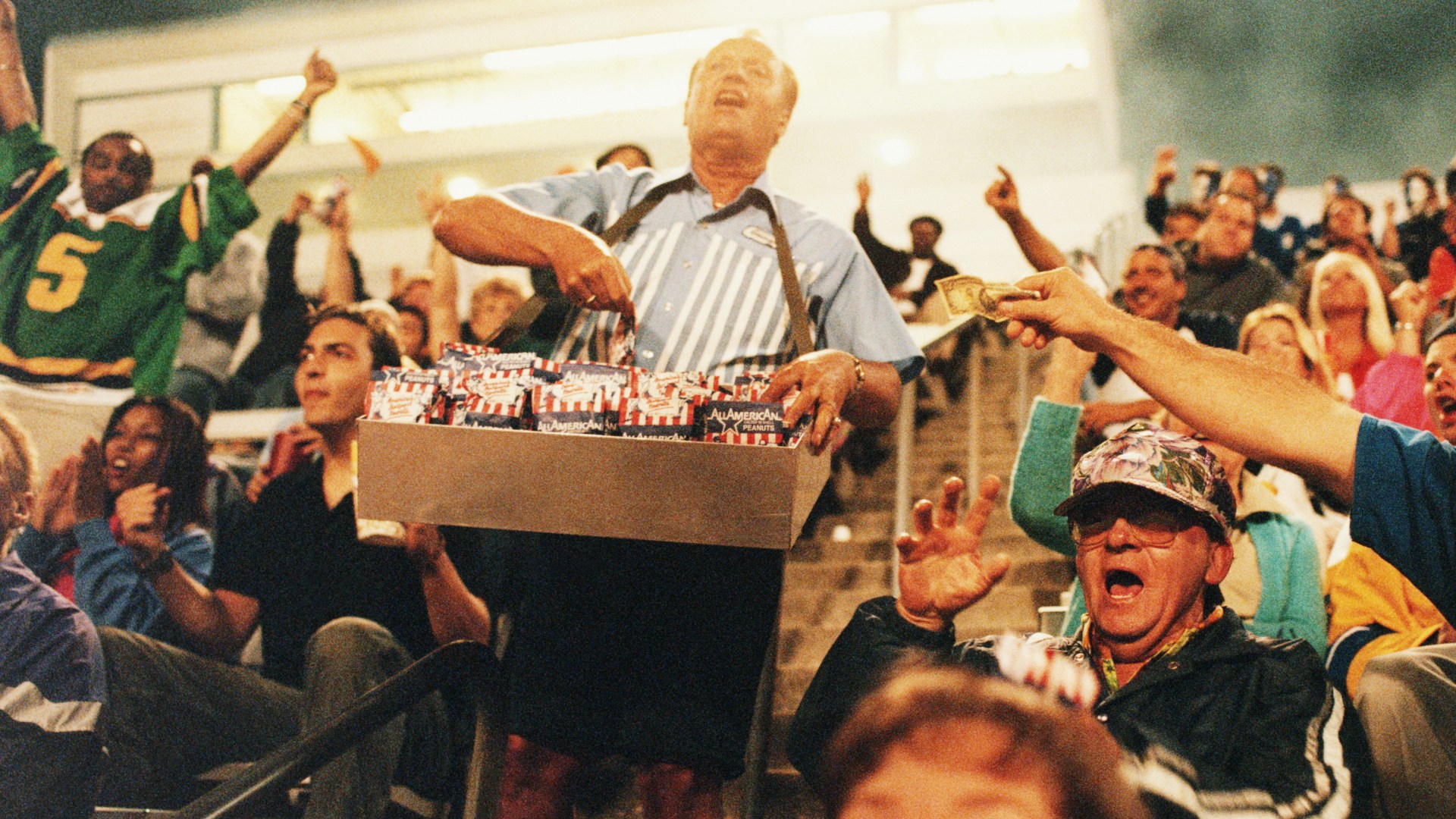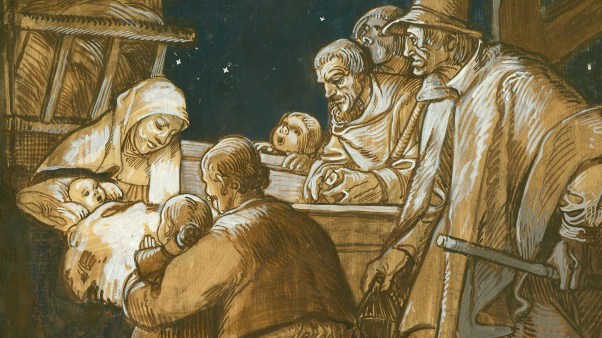In the early 1990s Randall Balmer ascended to rarified air: He became an academic whose name resonated beyond the ivory tower.
The impetus was Balmer’s 1989 book Mine Eyes Have Seen the Glory, perfectly summarized by its subtitle as “a journey into the evangelical subculture in America.”
The power of Balmer’s book (and subsequent PBS series) came from the strength and clarity of his writing along with his willingness to dwell in paradox. He was both an insider (at least in his past) and an outsider, an academic expert and a curious journalist, an empathetic listener and a critical interpreter. He was willing to bring himself into the project, to identify with the people and the cultural spaces he visited and studied even as he kept himself at a scholarly distance.
Balmer’s book won the respect of academics and intellectuals as well as some evangelical insiders. “He has us pegged pretty well,” a reviewer in Christianity Today admitted.
Soon after Mine Eyes was published, a new popular subculture caught Balmer’s ear. Living in New York City, he came across the city’s growing sports talk radio scene. Here, grown men spent hours each day engaged in feverish debates over arcane details related to the local sports teams, like whether the manager of the New York Yankees should have called for a pinch hitter in the sixth inning.
“It left me speechless,” Balmer writes in the opening paragraph of his new book, Passion Plays: How Religion Shaped Sports in North America. And it also left him curious. He wanted to know more. Why were so many men—and it was primarily men, Balmer notes—drawn into this world? Why was he interested?
“The longer I listened,” Balmer writes, “the more I wanted to figure out why sports invokes such peculiar passion.”
Multitude of meanings
Thirty years later, Passion Plays is the result of that initial curiosity and interest. While in Mine Eyes Balmer went by plane and automobile across the American landscape, here his journey is a metaphorical sojourn to the past, to the origins and development of the four major organized team sports in the United States and Canada: baseball, football, basketball, and hockey (with apologies to soccer fans, whose entrance into the American big time is always but coming).
In Balmer’s view, understanding “the beginnings, evolution, and symbolism” of those sports—as well as the ways they intersected with religious history and offered parallels to religious rituals and practices—provides crucial insight into the enduring allure of sports in American culture.
The structure of Passion Plays is elegant in its simplicity. After an introduction setting up the project, there are four chapters, one for each of the four sports Balmer has selected. Then comes a final chapter titled “Shut Up and Dribble”—an allusion to conservative commentator Laura Ingraham’s dig at politically outspoken athletes—that examines the social, political, and religious implications of sports in the present, including racial and gender dynamics.
Synthesizing material that is well-covered ground for sport historians, Balmer brings an eye for just the right quote as he moves briskly through his narrative. For each sport, he recounts the story of its origins and early development, emphasizing the fact that the four took their modern organized forms and shapes in the years between the 1840s and 1890s. He also links the sports with specific historical trends and developments, with a special focus on racial and ethnic inclusion.
Baseball, to Balmer, is defined by the paradox of its emergence during the Industrial Revolution. It represents a rejection of the clock—of the tyranny of time—and a nostalgic longing for an imagined pastoral past. It offers, too, “a metaphor for the immigrant experience and for those on the margins of American society.” Balmer depicts the batter as the representative outsider, outnumbered nine to one as he seeks to enter an “alien world” with “only three islands of safety” on his journey home.
That combination of historical narrative with speculative reflection continues throughout the book.
Balmer identifies football primarily with militarism and war, noting the centrality of violence to the game as well as the overlap between military strategies and the plays drawn up on the field. He traces its development from a game for Anglo-Saxon Protestants in the Northeast to one that crossed lines of region (extending into the South), religion (championed by Notre Dame and embraced by Catholics), and race, with Black Americans gradually moving into predominantly white football leagues. (The history of distinctly Black football spaces is briefly referenced but not analyzed.)
Hockey takes Balmer north, where he views the sport through the lens of Canadian nationalism, suggesting that it provided a way for Canadians to develop a sense of identity distinct from Great Britain. “If there is any town east of, say, Toronto that does not claim to be the birthplace of hockey,” Balmer writes in one of his many incisive lines, “I should like to know about it.”
Basketball, the final of the four, is identified with urbanization. Balmer sees it as a game designed especially for the city, with players required to navigate tight spaces with agility and precision. He notes its origins in the YMCA and other outposts of late-19th-century “muscular Christianity,” arguing that it represented Protestant efforts to “tame” the dangerous cities, to instill moral virtues and values that could bring order to the chaos.
Balmer is on the mark when he describes the unique connections between basketball and the city. And yet, his approach to basketball highlights a tendency throughout the book to overplay his hand, to overemphasize a particular interpretive lens in a way that conceals the multitude of meanings and constituencies that comprise American sports.
What to do, for example, about the early popularity of basketball in rural and small-town spaces? Kansas, Kentucky, North Carolina, and Indiana all took an especially strong liking to the sport. When the man credited with inventing basketball, James Naismith, visited the Hoosier State, he told a crowd that “basketball really had its origin in Indiana, which remains the center of the sport.”
For women in the years before Title IX, meanwhile, the flame of competitive basketball certainly found expression in cities. And yet it also faced substantial opposition there, especially from middle- and upper-class women seeking to protect notions of “respectable” womanhood. As a result, for many women, rural spaces in the South and Great Plains—where physicality was more often thought compatible with womanhood—provided the greatest base of support for basketball. In Iowa, small-town and farming communities helped build a thriving competitive girls high school basketball scene long before Title IX brought greater opportunities for women across the country.
For Balmer, however, these additional paths are either not mentioned or quickly dismissed in pursuit of an emphasis on the urban essence of the sport. It’s a style that recalls Michael Novak’s 1976 classic, The Joy of Sports. Novak’s book was designed more as a celebration of sports. Yet the combination of historical analysis interspersed with philosophical reflections seeking to locate the essential spirit of each sport is similar to Passion Plays. While this approach provides narrative coherence, it can flatten out the complex meanings of the sports and the diversity of their appeal as they developed across time and space.
If there is another weakness to Balmer’s book, it comes in the disconnect between what might be expected from the subtitle—How Religion Shaped Sports in North America—and what is delivered. Put simply, there is less detail about the specific ways religious history intersected with sports history than there is analysis and reflection on the potential parallels between religious practice and sports participation.
Thus, a section in the baseball chapter compares baseball with “the Garden of Eden, a lost, halcyon paradise.” In the football chapter, Balmer spends a few paragraphs on “sports radio as a form of auricular confession,” with the radio host acting as priest. In hockey, a consideration of the penalty box draws a comparison to Puritan and Catholic emphases on guilt and shame, while the weekly Hockey Night in Canada broadcast is compared with the gathering of a congregation for worship.
Wonder and curiosity
These and other reflections form the foundation for Balmer’s assertion that sports are so captivating in part because they provide an alternative site for men, in particular, to experience something approximating transcendent meaning. “Devotion to sports,” Balmer argues, “has eclipsed allegiance to traditional expressions of religion.”
For some men, especially the sports talk radio audience, this might be true. But the historical evidence suggests another interpretation. Instead of viewing sports and religion as competitors, there has long been a strong impulse and an intentional strategy in American culture to link them as allies. Balmer tracks this early on when he discusses muscular Christianity, but he does not continue the thread beyond the 19th century to consider why, for example, today’s athletes and coaches are likelier than ever to publicly identify with and proclaim their faith.
Still, even if Passion Plays does not offer a comprehensive historical narrative, it is a compelling and absorbing book. Balmer approaches his subject from an academic perch yet with a personal touch; he is understanding yet critical of what he calls the “wonderful and enchanted world” of sports. More suggestive and impressionistic than definitive, Balmer’s posture is one of wonder and curiosity as he revels in the potential implications of his findings. It’s that journeying spirit and the strength of Balmer’s clear and accessible writing that make this book shine.
For Christians in the United States who want a better understanding of our sports-obsessed culture, this is a book worth reading. It provides a lively introduction to the historical origins of the sports that we watch and play, while also inviting deeper reflection into the relationship between our religious practices, our sporting devotions, and the social worlds that we share with others.
Paul Emory Putz is assistant director of the Faith & Sports Institute at Baylor University.










